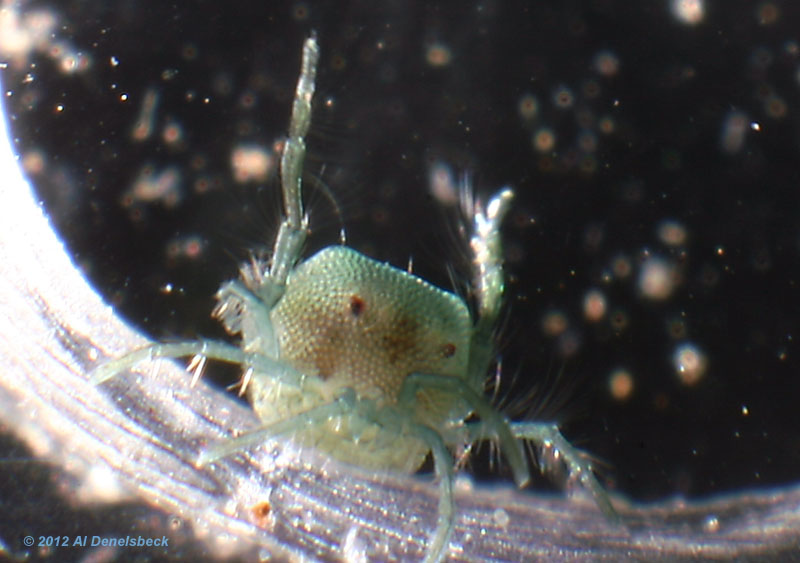Olympus 50mm f1.4 on Vivitar bellows
Metz 40MZ-3i flash on off-camera cord
ISO 100
f16, 1/200 second
| Canon
300D, tripod Olympus 50mm f1.4 on Vivitar bellows Metz 40MZ-3i flash on off-camera cord ISO 100 f16, 1/200 second |
| Pushing the limits | |
 |
|
It's easy to say that this one could have been sharper, or possessed more depth of field, but this was working at rather extreme magnification. The subject here, a water mite that parasitizes dragonflies (genus Arrenurus) and attaches while they're still aquatic nymphs, is less than a millimeter in diameter and can escape through a pinhole. Note the little chelicerae (fangs) between the forelegs.
Macro bellows can produce some really tight closeups, but it must be noted that using them often pushes the limits of lens resolution and useful depth of field. The Olympus 50mm f1.4 lens is quite sharp, but optimized for being much closer to the focal plane than it was used here, and diffraction effects were beginning to take over. The peculiar setting is actually a microscope slide with a piece of clear sheet acrylic attached, with a hole drilled into it to form a well for a drop of water, in which my subject swam hyperactively (as they are wont to do.) The lighting was obliquely from behind while the immediate background was dark, something called "dark field photography" which can highlight certain details that might otherwise have disappeared against a light background, such as the 'hairs' in the legs which allowed my subject to swim.
Working with such a rig requires a certain level of patience and a fine touch. The tripod has to be rock steady, and any bump of either the camera rig or the platform holding the subject will throw them well out of focus – even closing down the aperture manually, which is required when using the bellows, can disturb the extremely short focus range. Lighting is widely variable and may require switching flash position and bounce cards a fair amount, and throughout it all, your subject may not be cooperating by holding still (that's why the slide is being used in the first place, to limit the amount of space that my subject could scamper off to.) Add to that the fact that the camera LCD will never be able to tell you if you got focus nailed, so you'll have to keep uploading the images to your computer to know if you were successful, and it can make for a surprisingly long photo session – but perhaps still better than shooting toddlers.
